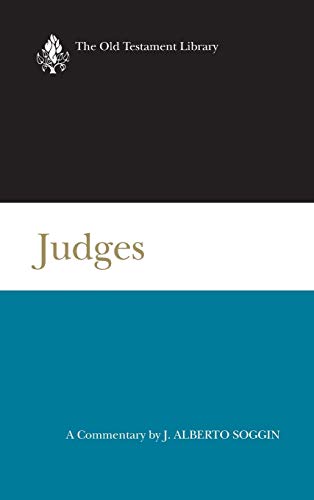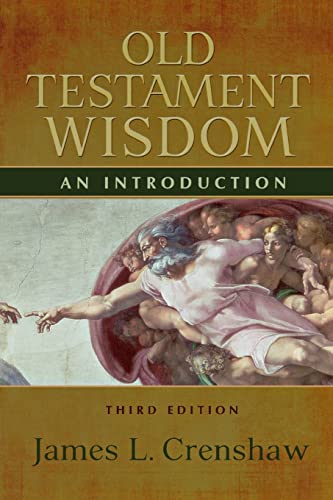Volume 8 - Issue 2
Recent Old Testament study: an evangelical assessment
By Gordon J. WenhamThe last few years have seen a flowering of fresh and original approaches to the Old Testament. Not all the new ideas are compatible with an evangelical view of Scripture, but they are keeping biblical scholars on their toes and making some of them at least more open-minded. The ‘assured results of modern scholarship’ are not quite so sure as they once seemed. This article seeks to pinpoint some of the areas of current debate and suggest an evangelical approach to them.
The most sacred cow of Old Testament critical scholarship is undoubtedly the documentary hypothesis of the pentateuch, according to which the pentateuch was composed many centuries after its professed author Moses out of four main sources J, E, D, and P. Yet since 1975 there have been a number of influential liberal scholars arguing that in various respects the hypothesis is inadequate and ought to be abandoned or at least completely revamped. Jewish scholars, such as M. Haran, A. Hurvitz, J. Milgrom and M. Weinfeld, have argued in a number of detailed studies that P is not a late source, but roughly contemporary with the early source J.
J. van Seters, Abraham in History and Tradition (1975), and R. Rendtorff, Das überlieferungsgeschichtliche Problem des Pentateuch (1977), have challenged the traditional source division at many points. While not abandoning source analysis entirely they have rejected some of the standard criteria, such as the use of divine names, apparent doublets and so on. More interesting still is the massive Biblischer Kommentar on Genesisby C. Westermann (completed 1982) which dispenses entirely with the E source, usually supposed to constitute a third of the Genesis narratives.
This antipathy to source division is one aspect of a much broader movement in contemporary Old Testament studies towards appreciating biblical narrative and its devices. The biblical story-tellers are now recognized as masters of their craft and many studies are being published to elucidate their techniques and motives. Thus many of the devices, such as repetition and vocabulary variation, which once used to be regarded as marks of multiple authorship are now recognized as integral to Hebrew narrative style. Two general works on this are by Jewish scholars, which no Christian reader of the Old Testament can fail to profit from, are J. Licht, Storytelling in the Bible (1978) and R. Alter, The Art of Biblical Narrative (1981).
Several studies focusing on particular biblical stories have appeared recently. They include: G. W. Coats, From Canaan to Egypt: Structural and Theological Context for the Joseph Story (1976); D. J. A. Clines, The Theme of the Pentateuch (1978); J. L. Crenshaw, Samson: A Secret Betrayed, A Vow Ignored (1978); C. Conroy, Absalom Absalom! (1978); D.M. Gunn, The Story of King David: Genre and Interpretation (1978); The Fate of King Saul: An Interpretation of a Biblical Story (1980). Because these works concentrate on interpreting the stories as they stand instead of trying to unravel the hypothetical earlier sources and possible later editorial additions, they contain a great deal that is of immediate value to any serious expositor of these narratives.
Unfortunately there is a tendency among some who extol the art of the biblical writers to minimise the historicity of the material. Alter for example sees much of the Old Testament as historical fiction. While van Seters in Abraham and Tradition and T. L. Thompson, The Historicity of the Patriarchal Narratives (1974) have assaulted one of the more positive ‘assured results’ of modern study, namely the historical authenticity of the Genesis narratives. Thompson and van Seters argue that many of the supposed parallels to Genesis are phoney, and that in fact many features of the narratives find closer parallels in the first millennium bc than in the second millennium in which the stories are professedly set.
Traditionally Christians and Jews have asserted that the historicity of the main biblical stories does matter. De Vaux (The Bible and the Ancient Near East, 1972, p. 59) wrote, ‘Once we admit … that the historical confession of Israel’s faith does not have its roots in history, then we empty our faith of its content.’ In Essays in the Patriarchal Narratives (1980, eds. A. R. Millard and D. J. Wiseman) a group of evangelical scholars take up the gauntlet thrown down by van Seters, Thompson and Westermann. J. Goldingay argues that the historicity of the patriarchal narratives does matter theologically. A. R. Millard points out that orientalists tend to adopt a more positive attitude to their sources than Old Testament scholars do to theirs. J. J. Bimson shows that the sites visited by the patriarchs according to Genesis coincide with archaeological evidence for their occupation in the early second millennium. M. J. Selman, while admitting the invalidity of some supposed parallels between patriarchal social customs and early oriental ones, still maintains there are thirteen valid parallels. D. J. Wiseman shows the implausibility of setting Abraham in the first millennium. I try to show that the picture of patriarchal religion presented in Genesis must antedate Moses. Finally D. W. Baker tackles some of the arguments for the source analysis of the Pentateuch.
Another burgeoning field in Old Testament study is that of sociological analysis. R. R. Wilson has produced two valuable studies that make good use of sociological insights, Genealogy and History in the Biblical World(1977) and Prophecy and Society in Ancient Israel (1980). N. K. Gottwald, The Tribes of Israel (1979) is a massive attempt to elucidate the religion and society of early Israel. If his over-all thesis that early Israel was born out of urban revolution is far-fetched, his detailed analysis of Israelite society is full of useful insights.
Hebrew poetry was another area in which most scholars thought some conclusions were assured. Although opinions were divided about the essence of Hebrew metre, generations have grown up on R. Lowth’s classification of poetic lines into synonymous, antithetic and synthetic parallelism. It was argued that the presence of parallelism was a sure sign that one was dealing with poetry. But J. L. Kugel, The Idea of Biblical Poetry: Parallelism and its History (1981) challenges this fundamental assumption pointing out that parallelism is also found in Hebrew prose. He calls therefore for a more careful definition of the distinctions between prose and poetry. A fresh definition is just what is offered by M. O’Connor, Hebrew Verse Structure (1980), while T. Collins, Line-Forms in Hebrew Poetry (1978) offers a careful analysis of the syntax characteristic of the poetry in the prophets. Each of these three studies proceeds along quite different lines, illustrating just how open this area of biblical studies is at the moment.
Two works by evangelical scholars deserve special mention. F. I. Andersen, The Sentence in Biblical Hebrew (1974) applies modern linguistics to the analysis of the syntax of Hebrew prose. Anyone who learns Hebrew or uses the av gets the impression that Hebrew is quite inflexible in its use of verbs and conjunctions: every clause seems to begin with ‘and’. Andersen shows that in fact the syntactical system is much more sophisticated, and can convey fine shades of meaning.
J. J. Bimson, Redating the Exodus and Conquest (1978) has attracted much attention for his very effective challenge to the received view that the Israelite conquest of Canaan took place in the thirteenth century bc. Reviewers have been more hesitant about agreeing with Bimson that the conquest occurred in the fifteenth century. Nevertheless this yet another area where ‘assured results’ no longer seem so certain.
Meanwhile Old Testament commentaries continue to appear steadily. The Anchor and New Century series offer detailed exegesis whose critical stance varies from volume to volume. The Tyndale and New International (NICOT) series offer a consciously conservative approach to dating and historicity, but again interpretation varies from writer to writer. Yet another commentary series made its debut in late 1982, the Word Biblical Commentary. P. C. Craigie and L. C. Allen, who gave the NICOT series a splendid start with their commentaries on Deuteronomy (1976) and Joel, Obadiah, Jonah and Micah (1976) will again be first off the mark with Word commentaries on the Psalms. This series promises to offer a thorough discussion of the critical and exegetical issues combined with an open-minded conservative theology, which should make them as valuable to the preacher as to the scholar.
Gordon J. Wenham
Colleges of St Paul and St Mary, Cheltenham






